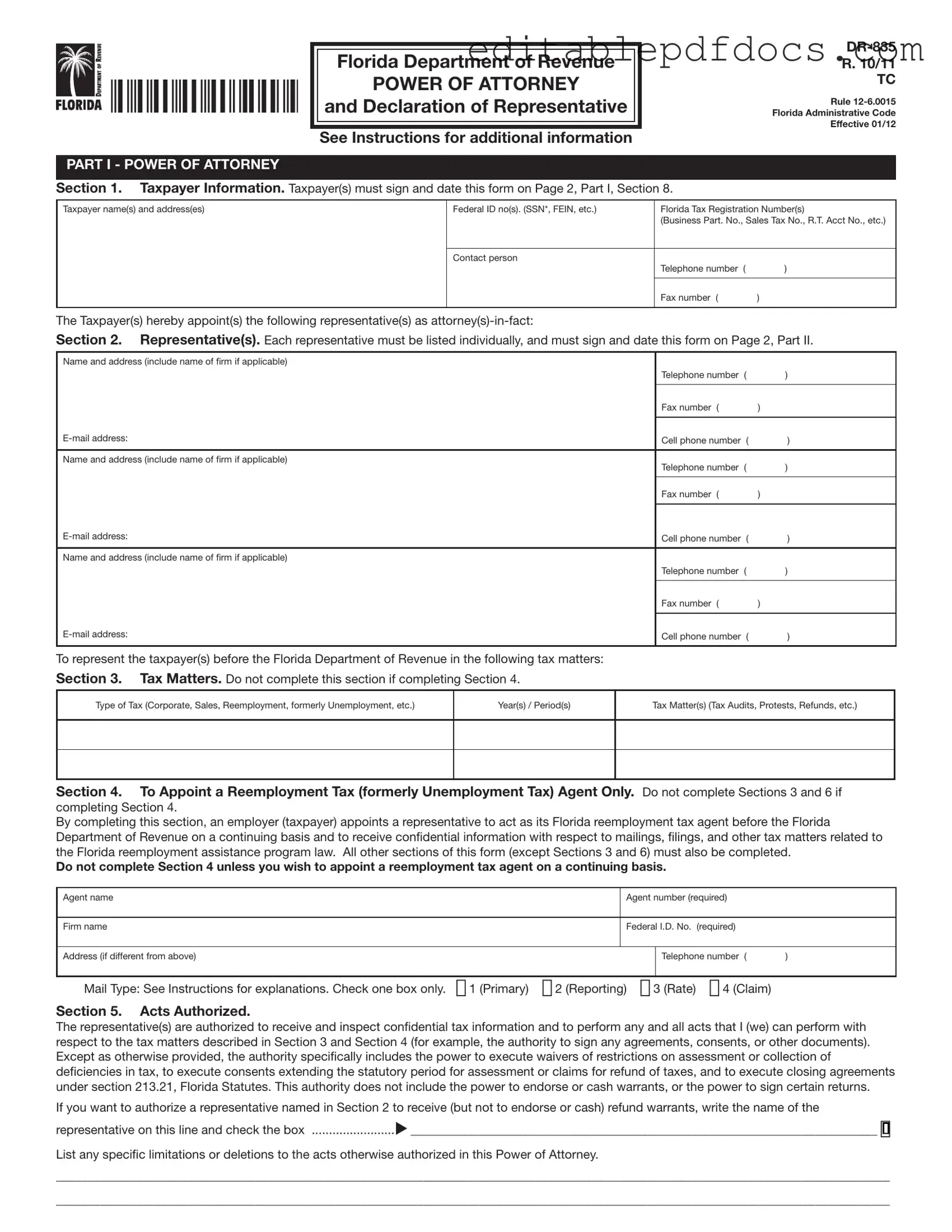Filling out the Tax POA DR 835 form can be a daunting task for many individuals. Mistakes during this process can lead to delays or complications in handling tax matters. One common error is not providing complete information. When a person leaves out essential details, it can hinder the processing of the form and create unnecessary confusion.
Another frequent mistake is failing to sign the form. A signature is crucial because it verifies that the individual authorizes the representative to act on their behalf. Without it, the IRS may reject the form outright. It’s also important to ensure that the signature matches the name provided on the form. Discrepancies can raise red flags and lead to additional scrutiny.
People often overlook the importance of using the correct version of the form. Tax forms can change from year to year, and using an outdated version can result in rejection. Always check for the most current version before filling it out.
Additionally, many individuals neglect to specify the scope of authority granted to the representative. The form allows taxpayers to limit the powers of their representative, but failing to do so can lead to misunderstandings. Clearly outlining the authority helps prevent any misuse of the power granted.
Another common mistake is not providing accurate identification numbers. Whether it’s the taxpayer's Social Security number or the representative's identification number, inaccuracies can lead to significant delays. Double-checking these numbers is essential to avoid issues.
Some people also forget to include a valid address for both the taxpayer and the representative. This information is necessary for communication purposes. Without it, the IRS may struggle to reach the parties involved, leading to further complications.
Moreover, many individuals fail to keep a copy of the completed form for their records. Having a copy is beneficial for future reference and can help resolve any disputes that may arise later. It serves as proof of what was submitted.
Lastly, individuals sometimes rush through the process without reviewing the form thoroughly. Taking the time to double-check for errors or omissions can save a lot of hassle down the line. A careful review ensures that the form is filled out correctly and completely, paving the way for smoother interactions with the IRS.
